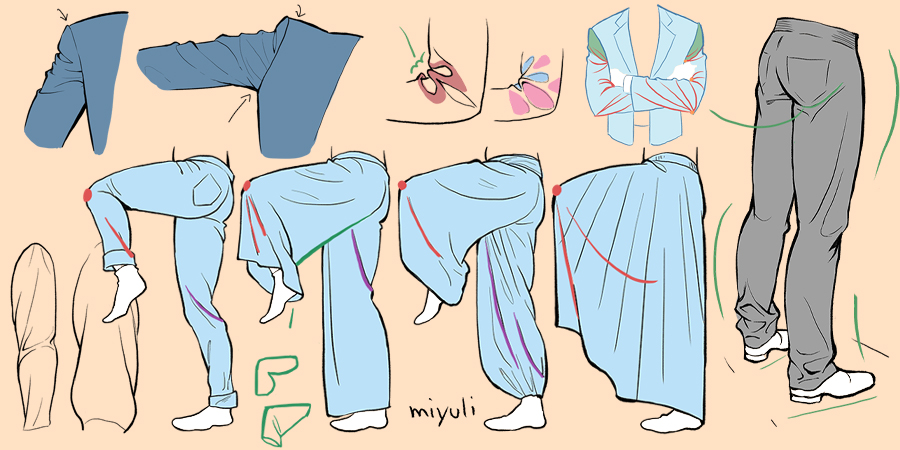Clothing Co-design Adoption and Consumer Attitude
The following section reviews literatureabout consumer: adoption and willingness to uptake apparel co-design. Adoption Needs Literature on the topicidentified various factors that could help facilitate the adoption of apparelMC and co-design. These include Trust and Computer Skills. Trust is a universalkey success factor for adopting online shopping in general across cultures.However, the concern with trust may differ by culture. For example a study with US college students, who shop online for custom Jeans, showed that their trustwas based on the performance of a website. In comparison,college students only trusted websites, if they were familiar with their brands. Inaddition, another study on adult females in the US, who also wereonline-shoppers, identified two major trust concerns: privacy of personalinformation and competency of the online co-design tool kit. While each ofthese studies revealed important motivations behind consumer trust of online shopping, they did not examine consumer life style segmentation. Because clothing is a personal item and is part of one’s lifes tyle, this makes life style data an important input in further identifying target consumers egment(s) for apparel MC. In addition to trust,computer skills were another apparel co-design adoption need that wasidentified in the literature. The co-design process requires that online consumers manipulate and navigate the providers’ website, review and choosedesign options to co-design a piece of clothing, before ordering it online.Computer aided design (CAD) is one of the applications used for this process.Several studies showed that the co-design process appealed to technology-savvy consumers who were: confident in their own design abilities, skilled in surfingthe web, and felt comfortable in purchasing products online. This skill will also be discussed later in this chapter as a precursor to consumer co-design experience. Similarly, consumers who felt less confident in their computer skills tended to abort the co-design process before its completion. The studies above highlight consumers’ need to trust the provider and to have the necessary computer skills to adopt the clothing co-design currently process offered online. In addition, trust is culturally dependent, while computer savviness isindividual capability-dependent. In addition to trust andcomputers skills literature identified other factors consumers need to further facilitate their adoption of apparel MC and co-design. These are co-design options, experience and uniqueness.Co-design Options: Co-design options represent consumer preferences in the design of the end product/service.Although studies on apparel co-design are limited, one critical aspect to itsadoption has been identified as the “paradox of choice”, a term coined bySchwatrz . This term describes a consumers’ state of mind when they are faced with variety of complex options to choose from, causing them to become overwhelmed and unsure of their own abilities, which finally leads them toabort the co-design process.A study focused on adult females in the US, showed them to more positively value website’s co-design competency (design variations/ complexity), than its simplicity and ease of operation (less design variations/complexity). Similarly in the US, fashion leaders and follower samong college students looked for more variety in co-design options. Another study tested a co-design tool kit for children’s clothing with parents, andshowed that although they valued more variety of co-design options, they tended to return and shop at websites with lessvariety and simpler options . This finding supports the approach of simplicity in navigating co-design options, as part of the website design. It is thereforea key element needed in adopting co-designing online.As a compromise and to mitigate the “paradox of choice” phenomenon, Enders proposed the concept of“micro communities”. This concept makes use of the “long tail” effect,identified previously by Anderson, which offers customization for niche markets. Spread shirt, an online t-shirt mass customizer operating globally,mitigated the “paradox of choice” by providing a customized online platform per seller. The seller in-turn offers a controlled number of co-design options relevant only to their niche market. The findings reviewed above point to the challenge of providing consumers with the right balance between variety and simplicity of co-design options. More research is needed to identify co-designstrategies in terms of achieving such a balance.Experience: As consumers become more involved in co-designing their clothing, they are immersed in ane xperience that is connected to the self. As stated above, Pine and Gilmore identified the experience economy as the latest transformation in the Westernworld. Clothing co-design belongs to this economy as its main aim is to attract and keep consumers by engaging them in an authentic, and memorable experience. According to Gentile et al.“The consumer experience originates from a set of interactions between a consumer and a product, a company or part of its organization, which provoke a reaction.This experience is strictly personal and implies the consumers’ involvement at different levels (rational, emotional, sensorial, physical, and spiritual)”. In the realm of marketing, a consumer experience is the personal per spective of contact with a brand presence.This said, however, enjoyable consumer experience demands certain expectations and capabilities. Solomon identified the need to educate consumers on the demands of the co-design activity, relative to theirtime and effort. Similarly as part of the customization process, a knowledge transfer is expected to occur when consumers specify design details of a custom garment. In addition, an online co-design process requires computer skills,where consumers need to feel comfortable navigating the Internet, and co-design tool kit applications. For example, when college students attempted to customized their t-shirt online, only those who were technology savvy enjoyed their experience, and found it convenient and fun, and the online co-design tool easy to use In a recent study, the findings showed that as consumerco-designers gained more expertise in co- designing, they looked for and enjoy advanced co-design tool kits, and a wider solution space. In contrast, noviceco-designers preferred less or limited options matching their decision- making capability. Some consumers may experience stress during product co- design processes. Product knowledge coupled with knowing their own preference plays akey role in developing confidence in their own abilities. Various studies showed potential apparel consumer co-designers needed design help. For example,sportswear female consumers in the US, expressed concern with their design ability,and their interest in having access to a design coach. Similarly, female college students expressed a need for design coach to fill a gap in their knowledge of apparel customization. However, fashion leaders and followers among university students, predominantly female, liked the co-design recommendation option, and did not express a need for coaching or design help.These findings showed various adoption needs including product knowledge,computer skills and the need for coaching.The need for coaching is further issupported by Franke. who argued that most consumers lacked experiencein developing products, and would benefit from external design advice.According to the authors an online community of expert consumer co-designers may fulfill the co-design knowledge gap for those who arenovice. In their view this could help novice consumer co-designers at twostages: the idea development, and design evaluation stage. Similarly recommended providing consumer co-designers access to an online community, asthis concept has the potential of fostering multi dimensional relationships among its users, and contributing to brand loyalty. The author provided examples of innovative t-shirt mass customizing companies such as Zazzle and Threadless, which were noted for providing an online community platform, forconsumer co-designers to communicate and interact with one another, separate from that of the enterprise. The author suggested that using such a concept has several benefits as: it allows novice co-designers to be helped by others whohave more experience; expert consumer co-designers to share creative work with like-minded community; and the enterprise to benefit from timely feedback froman online community they helped create.The studies brought several points tolight. This included consumer co-designers varying skill and confidence levels,which impacted their co-designing experience and adoption. Therefore relevantcoaching is needed to close knowledge gaps, and to this end various authorsrecommended peer coaching via online communities. While these findings are veryvaluable, most were examined from the female perspective in the US. Moreresearch is needed to close a gap in consumer adoption needs across gender(male and female) and lifestyle segmentation, from a Canadian perspective.
Willingness In comparison to UNITECLOTH MANUFACTURING clothing that is mass-produced and ready to purchase at retail oronline, apparel MC and co-design processes require longer time to design,produce, and deliver to consumers. The consumers’ degree of willingness tosacrifice their time, and money, to own a personal piece of clothing theyco-designed, signals their willingness to adopt it. The following sectiondiscusses literature about consumers’ willingness to pay extra and wait longerfor apparel customization. a)Willingness to pay Extra Students who have co-designed personal items, such as clothing and accessories indicated their willingness to pay more for their creations. In theUS, 88% of university students were willing to pay more for t-shirts theyco-designed online. Their willingness to pay more increased proportionally with higher customization levels , and higher creative freedom available in the co-design tool kit. Similarly college students who co-designed a cell phone cover online, were willing to pay more for it than its retail price. The reasons behind this were attributed to the uniqueness of the product, a value add second only to aesthetics and functional fit. A qualitative study of Chinese students in the US showed only those with hedonistic behaviour and fashion leadership were willing to pay more for apparel customization. However, those with hedonistic behaviour, and were fashion followers, although they would haveliked to have it, were not willing to pay more for it; and those with utilitarian behaviour were neither interested in apparel MC, nor willing to paymore for it. In contrast, a study involving US university students,predominantly female, found that fashion leaders and followers were both willing to pay more for custom jeans, with fashion leaders willing to pay ahigher amount. The findings above provideda positive indication of consumers’ willingness to pay more for custom apparel.However fashion followers in Ou’s study of Chinese students, differed from thatof other studies who focused on college student in the US. This observationsuggests that willingness to pay more for customized may vary by culture.
b)Willingness to wait forcustomization In the US two studies were undertaken to examine, predominantly female, university students’ willingness to wait longer for co-designed custom clothing. Their results showed fashion leaders, and followers were willing to wait up to 2 weeks. Earlier study byKurt Salmon Associates showed participants were willing to wait up to 3 weeks;and most recently, a study of Chinese university students in the US showed those interested in apparel MC were early adopters, and were willing to wait1-2 weeks. On the other hand, those who were not interested in apparel MC were followers, and were not willing to wait. These findings show inconclusive dataon willingness to wait for custom clothing (1, 2 or 3 weeks), and focused ondiscrete consumer segments: gender, lifestyle, and country of origin. |

